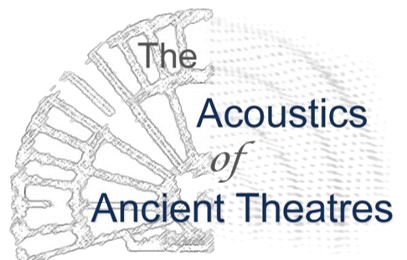
The Acoustics of Ancient Theatres
International Symposium
Verona - Italy, 6 to 8 July 2022
Vocal adaptation to simulated acoustic environments: the role of cognitive effort and auditory imagery skills
Keiko Ishikawa , Elisabeth Coster , Silvia Murgia , Yvonne Redman , Pasquale Bottalico
DOI: https://doi.org/10.58874/SAAT.2022.179
Abstract:Acoustic conditions vary across theaters, changing the way singers hear themselves. This study evaluated the effects of
virtually simulated acoustic environments on singers’ vocal behaviors, and how they relate to the singers' auditory imagery
skill and cognitive effort. Five singers, who completed the minimum of undergraduate-level training, participated in the
study. The participants sang the American national anthem. Their voice signal was digitally processed to add reverberation
using a real-time effect processor. The average T30s were 1.13 s, 1.39s, and 1.90 s for low, medium, and high T30 conditions.
The processed sound was played back to the participants through open headphones. For each condition, the participants
rated the level of overall effort, mental effort, physical effort, frustration, and performance using a modified NASATLX
scale. Their cognitive effort was also measured with pupillometry during the tasks. The participants' imagery skills
were measured by their response to the Clarity of Auditory Imagery Scale. Their voice recordings were acoustically analyzed
for intensity, singing-power ratio, alpha ratio, pitch accuracy, and rate and extent of vibrato. The presentation will
discuss individual differences in the participants’ vocal responses to varying acoustic conditions, and the relationship between
vocal behaviors, cognitive effort, and auditory imagery skills.
Keywords:
Pages:192-192
Paper:![]()